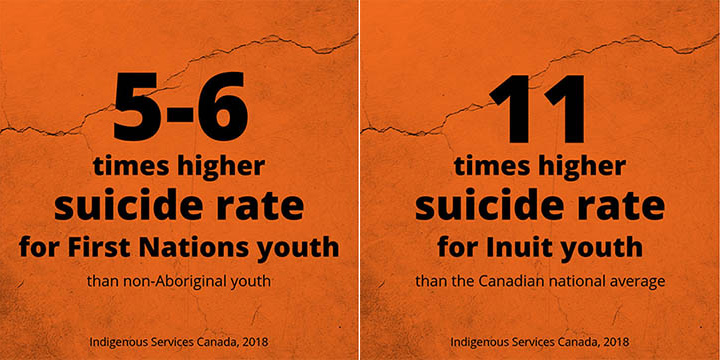Indigenous communities have faced centuries of challenges, including forced displacement, loss of cultural identity, and socio-economic disparities. These challenges have contributed to alarmingly high rates of suicide among Indigenous youth and adults. However, there is hope. In this blog post, we’ll explore the critical issue of Indigenous suicide prevention and the efforts being made to create a brighter future for these communities.

Understanding the Crisis
Suicide rates among Indigenous populations are consistently higher than the national average in many countries. The reasons behind this crisis are complex and multifaceted, rooted in historical trauma, systemic inequalities, and limited access to mental health services. To effectively address this crisis, it’s essential to recognize these factors and work collaboratively to develop culturally sensitive interventions.
The Importance of Cultural Identity
One of the most powerful protective factors against suicide within Indigenous communities is a strong connection to cultural identity and traditions. Efforts to revive and celebrate Indigenous cultures play a pivotal role in suicide prevention. Indigenous ceremonies, languages, and traditions provide a sense of belonging, purpose, and pride that can mitigate the risk of suicide.
Community Initiatives
Across Indigenous communities, individuals and organizations are taking action to prevent suicide. These initiatives often involve a combination of education, counseling, and community support. Some key efforts include:
- Crisis Hotlines: Toll-free hotlines staffed by trained counselors who understand Indigenous cultures provide immediate support to individuals in crisis.
- Youth Programs: Youth-focused programs and mentorship opportunities empower young Indigenous individuals to build resilience and develop leadership skills.
- Cultural Revival: Cultural events, such as powwows and language immersion programs, help reconnect community members with their traditions and heritage.
- Mental Health Services: Expanding access to culturally competent mental health services is critical. This includes training mental health professionals to understand and respect the unique needs of Indigenous clients.
- Education: Schools and community organizations offer suicide prevention training to recognize warning signs and provide support to those in need.
Policy Advocacy
Addressing the Indigenous suicide crisis also requires systemic change. Advocacy efforts at the policy level are crucial for improving healthcare access, educational opportunities, and economic stability within Indigenous communities. Indigenous leaders and their allies are pushing for changes in healthcare policy, mental health funding, and educational curricula that incorporate Indigenous perspectives.
Breaking the Stigma
Mental health stigma is a pervasive issue in many communities, including Indigenous ones. Overcoming this stigma is essential for encouraging individuals to seek help when needed. Sharing personal stories of hope and recovery can reduce the shame associated with mental health struggles and inspire others to seek support.
Indigenous suicide prevention is a complex challenge that demands a multi-faceted approach, rooted in cultural sensitivity, community resilience, and policy change. While the crisis is significant, the efforts being made by Indigenous leaders, organizations, and allies offer hope for a brighter future. By celebrating cultural identity, providing support services, advocating for policy change, and breaking the stigma surrounding mental health, we can work together to prevent suicide and create stronger, more vibrant Indigenous communities. Together, we can cultivate hope and healing.



Add a Comment